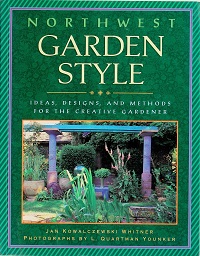
Jan Kowalczewski Whitner immediately won my approval in “Northwest Garden Style” by explaining her approach to determining the most common landscaping problems for regional gardeners. She reviewed the reference questions received at the Miller Library over a five year period—brilliant! While I haven’t done the same exhaustive review of more recent questions to the library, I would expect the list of today would be very similar, making this book still very relevant.
Three of the eight topics she found in her research explore some aspect of what Jan dubbed a “natural garden”, specifically creating landscape plans that use native plants, attract wildlife, and conserve water. She begins each topic with examples from local gardens, interviewing the owners and/or designers, and validating the many approaches to reaching the same goal.
As in her other books, both sides of your brain are exercised. The photographs by Linda Quartman Younker suit and expand on the lyrical descriptive prose of the designs very well. Yet each garden is also summarized in a side box with practical elements like topography, soil, lighting, climate, and the impact of surrounding properties; concluding each chapter are businesslike checklists to make sure you achieve your earlier inspirations.
Later chapters delve into the limitations of slopes or very small properties, and with creating special settings using hardscapes or water features. Again, she begins from a very personal perspective: “All gardeners follow different paths to their own, personal epiphanies—those moments of divine illumination…by adding the anarchic element of water to my garden, I was inviting a dash of divine chaos into my soul at the same time.”
The only chapter in “Northwest Garden Style” that seems from a different era is on roses, as today this would most likely be replaced by an essay on kitchen gardens or similar. Roses are not my favorite plant, but after reading the description of informal rose garden in Portland, I had a new perspective. Here, “birds find a welcome in this rose garden year-round, where they can nest and forage in tall thickets, dine on choice aphids and slugs in summer, and pick over nutritious rosehips left on the branches in winter.”
Excerpted from the Summer 2014 Arboretum Bulletin.

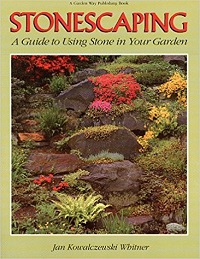
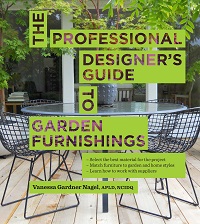

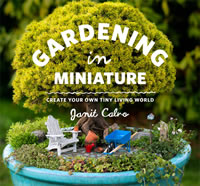


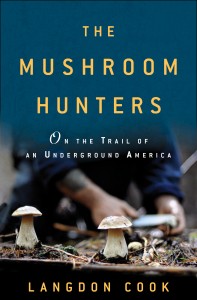
 Melany Vorass Herrera is an enthusiastic and experienced forager who lives in Seattle. In
Melany Vorass Herrera is an enthusiastic and experienced forager who lives in Seattle. In